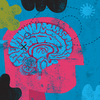Stage actress Sarah Bernhardt (1844-1923) reclines in a scene from an unnamed theater production.
Hulton Archive/Getty Images
hide caption
toggle caption
Hulton Archive/Getty Images

Stage actress Sarah Bernhardt (1844-1923) reclines in a scene from an unnamed theater production.
Hulton Archive/Getty Images
A newly discovered pathway between the heart and brain may explain why healthy people faint.
The pathway appears to carry signals from the heart’s lower pumping chambers to an area of the brainstem that controls heart rate, blood pressure and breathing, says Vineet Augustine, a neurobiologist at the University of California San Diego.
When scientists stimulate nerve cells along that pathway in mice, Augustine says, “the heart rate immediately dips, they wobble around a little bit and then they fall over.”
The finding, published in November in the journal Nature, offers a biological explanation for fainting that isn’t caused by an underlying medical condition.
“A lot of people faint at the sight of blood,” Augustine says, “or when they’re having blood drawn or exposed to a very intense emotional stimulus.”
The study also offers a clearer picture of how the brain and body usually work together to keep us from passing out, says Robert Wilson, a neurologist at the Cleveland Clinic who was not involved in the research.
“There’s this whole orchestra that responds to how blood is flowing, that tells the heart how to speed up, how much to pump,” Wilson says.
Understanding that orchestra has become especially urgent since the arrival of COVID-19. The disease often affects a person’s autonomic system, which regulates functions including heart rate, blood pressure and breathing.
In the past, autonomic disorders didn’t get much attention, Wilson says. “Then COVID occurred, and a lot of the long COVID patients have autonomic dysfunction, dizziness, fainting, and it’s a big deal.”
Old science, new understanding
About 40% of people pass out at some point in their lives. Most of the time, there’s no medical reason.
Doctors call this sort of fainting vasovagal syncope, and it occurs when there is a sudden drop in heart rate and blood pressure. That reduces blood flow to the brain, which shuts down the circuits that keep us conscious.
Research dating back to the 19th century links this type of fainting to the vagus nerve, a wandering tract that connects the brain to internal organs including the heart, lung and gut.
“But what was not clear was which part of the vagus nerve,” Augustine says. “The vagus nerve is big. It’s a major highway between the body and the brain.”
Scientists once thought the vagus nerve was merely a way for the brain to control internal organs. But studies show it’s a two-way street. The gut, for example, can affect the brain.
Augustine’s team figured that this might be true of the heart as well.
“We were trying to argue [that] the heart also sends signals back to the brain which can influence its function and behavior,” he says.
The team used genetic tools and advanced imaging techniques to study a cluster of sensory neurons in the vagus nerve of mice.
By identifying which genes were switched on in each neuron, the researchers were able to identify a distinct population of cells that hadn’t been studied.
Then, using a technology that makes certain tissues transparent, the team showed that these cells form a fiber communication pathway that leads from the heart’s ventricles (the lower pumping chambers) to the area postrema, a region of the brainstem best known for its ability to induce vomiting.
The researchers used laser light to stimulate the pathway in mice, which caused not only fainting but several other signs seen in people as they lose consciousness. The mice’s pupils would dilate, their eyes would roll back, their breathing and heart rate would slow, and their blood pressure would plummet.
Swooning’s many unknowns
Scientists are just beginning to understand how the heart and brain communicate.
For example, it has been less than a decade since researchers explained the baroreflex, which keeps blood flowing to the brain whether we’re sitting or standing.
That finding helped Ardem Patapoutian of Scripps Research win a share of a Nobel Prize in 2021. It also has given researchers a target for treatment of conditions that affect the baroreflex.
Augustine once worked with Patapoutian. Now, his team’s apparent discovery of a fainting reflex could help patients with other disorders that affect blood flow to the brain.
Wilson agrees.
“This is probably a new door to go through for treatments and for understanding,” he says.
Right now, Wilson says, he has limited options when it comes to treating people who become lightheaded or faint.
“Sometimes people just need to avoid triggers,” he says, “and sometimes people might need an actual medication.”
Often the medication used to prevent fainting simply raises a person’s blood pressure. The new study could lead to treatments that more directly address the underlying problem.











